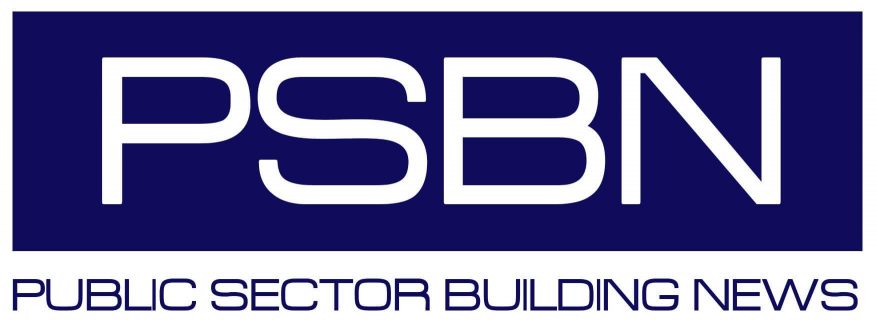Hardware and Fire Door systems specialist Winkhaus has invested extensively to ensure their Composite Fire & Security door set solution consistently proves performance and ensures compliance with all the latest requirements.
Winkhaus UKs Technical Director, Chris Flaherty, provides clarity for specifiers following a series of legislation and guidance updates covering the specification of composite fire doors.
Chris are specifiers clear on what certification is required, following all the recent updates?
We are seeing a lot of confusion and frustration amongst specifiers as to what is required and what is actually needed following these updates.
To help, these are some of the regular requests for clarity my team and I are seeing from specifiers.
What is required for a compliant specification?
The MHCLG advise within Annex A that composite fire doors should be supplied only by manufacturers audited by a 3rd Party Accreditation Scheme, such as Q Mark or similar. This accreditation should cover three key requirements:
- The 3rd Party Accreditation scheme necessitates a Field of Application (FoAp) that details a manufacturers compliant range and permutations of doorset.
- The 3rd Party Accreditation scheme then audits that the information contained in the FoAp is CORRECT AND CURRENT.
- The 3rd Party Accreditation scheme additionally audits the Factory Production Controls at the door set manufacturer to ensure that the products are manufactured with the same consistent specification as the tested products.
In summary, 3rd Party Accreditation audits two features of the door set:
- First the audit ensures the fire and security resistant doorset test evidence performance meets the correct and current legislative requirements.
- Secondly the audit also ensures that the manufacturer continues to consistently manufacture the doorset to the current test evidence specification.
Why is a field of application used and not fire/security test reports?
Any individual test report is only suitable for the EXACT size of the tested door, any changes to the door set size are not allowed.
The only practical legal document that can state a size range compliance for Composite Fire Doors (from smallest to largest door set, based on various test reports) is a Field of Application document (FoAp). The FoAp is the “rule book” of what the manufacturer can make, based on the multiple test reports that are summarised in the FoAp. Small variances in Composite Fire Door size could be created by a technical rule called “Direct Field of Application” but this would only be a small % difference in size relative to the tested sample – therefore this is not practical to cover a size range for the UK market.
This is why, during 2018 many door set manufacturers had to cease production until they had tested a range of doors, tested from both sides and created a new Field of Application. They could not re-enter the market based only on one individual test report.
Who creates the field of application document?
The 3rd Party Accreditation scheme necessitates a Field of Application (FoAp) that must be produced by a Notified Body UKAS Accredited organisation. The FoAp is prepared and checked by suitably qualified professionals following the general principles of EN 15725:2010 who subscribe to the principles outlined in the Passive Fire Protection Forum (PFPF) and the UK Fire Test Study Group guidelines. These professionals are qualified and trained to interpret the special minimum testing conditions of the composite fire door.
The aim of the PFPF guidelines is to give confidence to end users that FoAp assessments that exist in the UK are of a satisfactory and CURRENT standard, to be used for building control.
As the field of application report is created by a Notified Body UKAS Accredited organisation, why does it need to be audited also?
If the fire test method for doors suddenly changed and as an example required higher temperatures in the furnace during the test – then all the previous test evidence would have to be repeated at the higher temperature.
It is not reasonable for a specifier, buyer or even Building Control inspectors to follow these technical changes – this is why the MHCLG have recommended that fire doors are supplied via a 3rd Party Accreditation Scheme the auditing process ensures the FoAp is always correct and current when compared to the latest issue testing requirements.
Does the 3rd Party Accreditation provide any further benefits?
Yes, 3rd Party Accreditation scheme additionally audits the Factory Production Controls at the door set manufacturer.
Checking that all the departments in the manufacturing chain from receiving the orders, component buying, warehouse storage, manufacture and dispatch are all controlled by persons with the relevant skills and appropriate training records.
This ensures that the products are manufactured with CONSISTENCY to exactly the same specification as the tested products day in day out.
So what is the MIMIMUM compliance documentation the Specifier should request from the manufacturer?
The manufacturer shall supply a valid 3rd Party Accreditation Certificate which demonstrates BOTH Fire and Security compliance of the doorset.
The manufacturer shall supply a Field of Application report which identifies the range of doors that can be manufactured / supplied.
The manufacturer shall supply a 3rd Party Accredited “Scope of Accreditation” which further clarifies product specification which references BOTH the manufacturer Certificate number and the manufacturer FoAp number.
Housing Associations, Landlords or Local Authorities looking to specify composite fire doorsets please contact Winkhaus on 01536 319091 or email marketing@winkhaus.co.uk. For more information, please visit www.winkhaus.com/en-gb.


